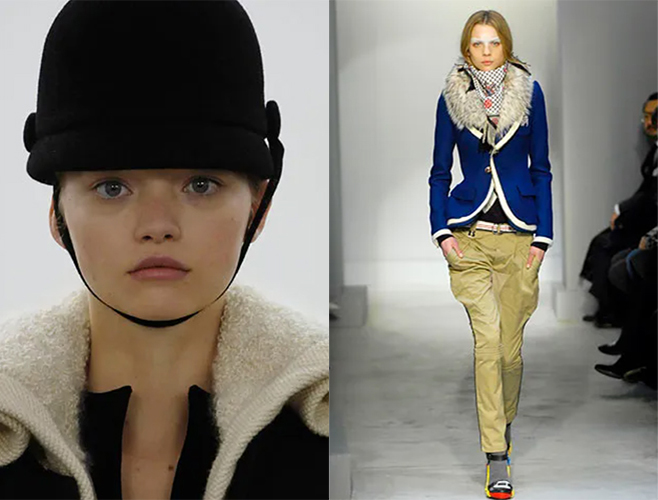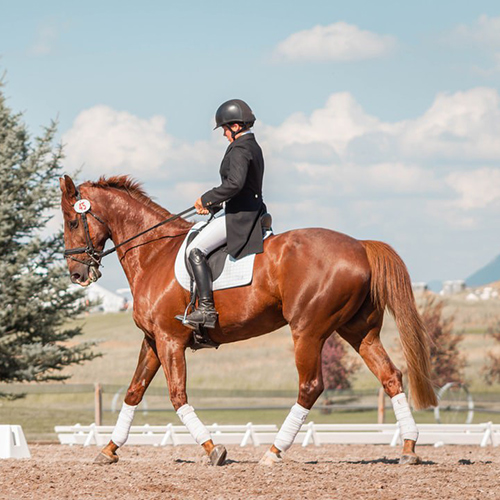Why The Equestrian Look Will Always Be in Style
I did not grow up a Horse Girl. The only time I ever rode a horse was in Tagaytay when I was younger, led by an expert (mandated by my parents, because that was the only way they would say yes) since that is what you did in Tagaytay in those days. I do not particularly know if I would enjoy riding a horse for pleasure, the way girls who grow up doing it, do, because I never had the opportunity to do so: horse riding is not just something you decide you want to do, it requires a whole host of other factors to happen (your parents, for instance, have to want to put you on a horse).
I went to a women’s college with a riding team, where I had a chance to take riding classes to fulfill my Physical Education requirement. The school had the normal list of classes you could take: badminton, swimming, volleyball, and dance. But they all seemed to me like it would require too much physical exertion, which back then was something I dreaded. Riding a horse seemed like a good middle ground: technically the horse does the work for you. But then I heard those who took Beginning Riding barely rode the horses: it was classes on how to mount and dismount, and then how to feed the horse, and how to groom. My mother heard of this hare-brained scheme and put her foot down: if I fell off and injured something (everything), the medical expenses (this was the United States) would probably cost as much as my future. So I gave up on the plan.
Many years later, I still find the trappings of the equestrian aesthetic alluring: I, too, want to wear a blazer, jodhpurs, and riding boots. During meals at the Last Chukker at the Manila Polo Club, I would look at the plaques bolted on the walls and read the list of rider names, always wondering what they were wearing when they won Jumping Rider of the Year in 2003. Nicolas Ghesquière’s Balenciaga AW 2006 and AW 2007 shows, which saw a plethora of riding motifs on the runway, are my favorites. 2006 had tweed coats and cloche hats that bought to mind equestrian helmets, while 2007 featured a bevy of blazers that wouldn’t look out of place at a competition. I was so obsessed with the navy blue one with white piping that I immediately purchased a knock-off from Forever 21 and wore it with a turtleneck and jeans, approximating my version of the Horse Girl look (surely to the dismay of actual Horse Girls at school).

I have always wondered why I find this look so attractive. It might be because insular subcultures have always fascinated me (I was like this too with the field hockey girls). It is also, obviously, a physically appealing get-up: if you look great in a trim blazer and tight pants then it means you have worked for it. There is additionally, I think, a sense of female independence attached to a woman in riding gear. Women riders started out riding in full skirts and sitting sidesaddle, and when that look was deemed impractical, they started wearing trousers and riding astride. It was one more step towards women wanting more for themselves and carving out a sole interest that was purely for them, and today, riding for women is largely seen that way: avid rider and one-time competitive equestrienne Anton DiSclafani, who wrote The Yonahlossee Riding Camp For Girls, told The Cut (who called her book “beautifully written, and essentially horse porn for literary-minded equestrians”) that for her, “Riding requires so much mental and physical energy, and when I’m doing it, it’s the only time of the day when I’m not worried about something. It’s better than therapy.”

Lately, as we have all spent time indoors, I think it could be because the full look implies that you spend time outside, enjoying the crisp, country air. In Season 4, Episode 4 of The Crown (Favourites), Queen Elizabeth asks Princess Anne, “Isn’t this heaven? Tucked away in the country, rain and mud and horses and dogs, children, privacy. I do envy you.” Right now, these are all things we want back in our lives. To be sure, the outdoors in The Crown is not always the neat, aestheticized world of equestrians: other than Princess Anne’s show jumping competition, the rest of the time it is replete with the imagery of Barbour jackets and mud-strewn faces after a day spent outdoors stalking deer, antagonizing Margaret Thatcher, and impressing your future father-in-law, thereby dooming yourself to a miserable marriage (another article idea). Or if you are Season 1 Princess Margaret, the look is less about outdoor appreciation and more “I am about to get my libido pumping in preparation for a romp at the stables with my highly inappropriate beau.”
Since we are speaking about The Crown, it is important to mention the class implications that come with the sport. Riding is a very expensive, exclusive sport, mostly saturated by the privileged few: one that requires a) a horse (obviously), b) stables to house them in, c) in this country, a country club membership for you to be able to practice and compete. All of those things require money (I knew someone in high school who took up modeling to finance her mania for competitive riding). For other people, this is the other attraction that comes to dressing like you ride horses: you look like a person who does it for pleasure, which implies that you probably enjoy the finer things in life.
In recent years, the attraction of the look for this specific purpose has fallen off. “The cultural rise of the horse girl can be read in concert with the decline of equestrian fashion, which feels incompatible with our class-conscious moment and seemed already on its way out before the pandemic exacerbated already rampant economic inequality.” wrote Whitney Mallet for Ssense. Today’s Horse Girl probably has a wider, more inclusive view of the world. “As we face the problems of our era head-on from racial injustice to climate change, big horse girl energy means a disregard for social norms, always an asset in the fight for radical change,” she continued.
But I do not know if I agree. I think there is always something in me that will always prefer that specific blazers-and-jodhpurs look. I do not think it makes me, or anyone else who does, a problematic person with a conservative viewpoint. I think equating the look with any one political or social view is reductive because people are dynamic, living, thinking, and breathing creatures. You can like one thing and believe in another. In other words: no one personality owns the look. All they have in common is an appreciation for it and what it conveys.





